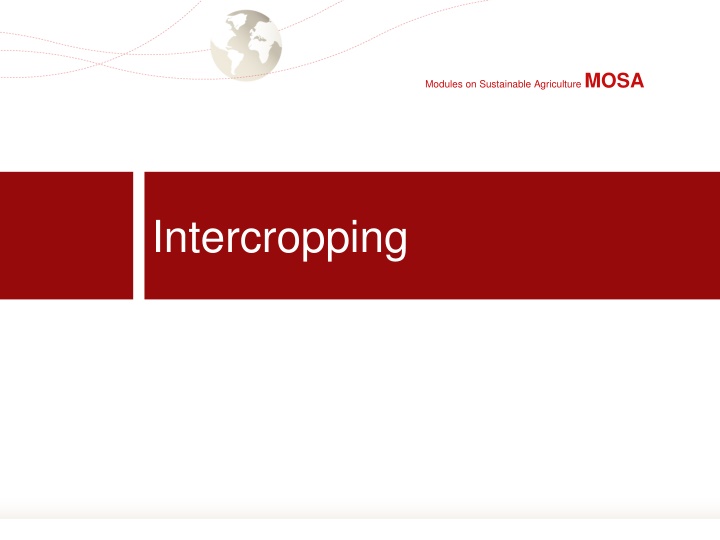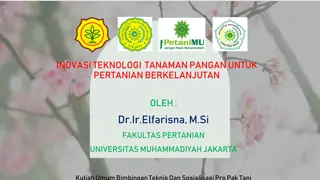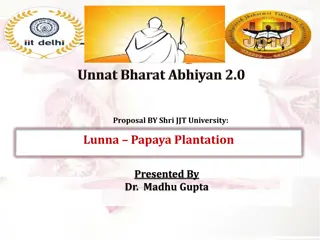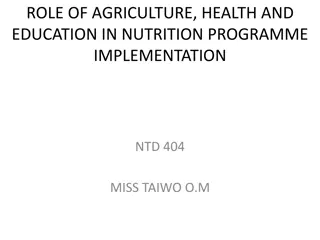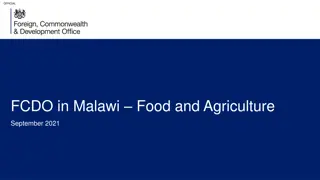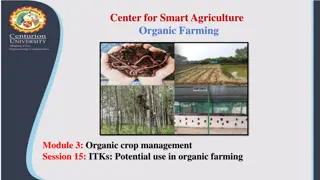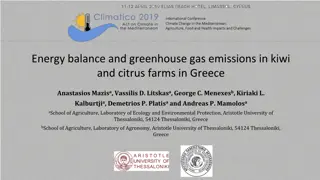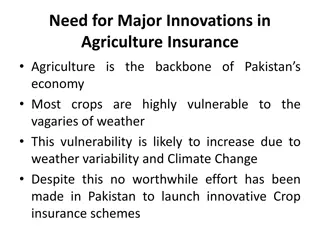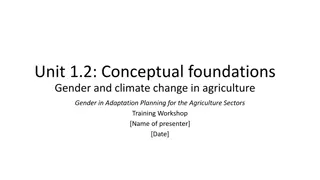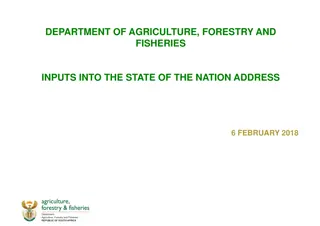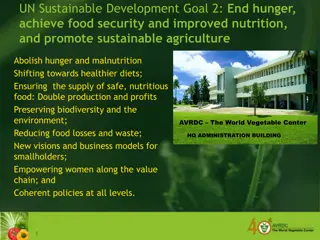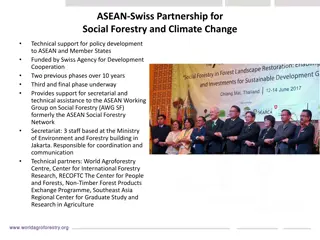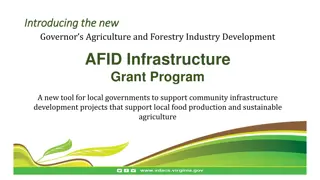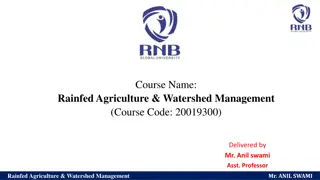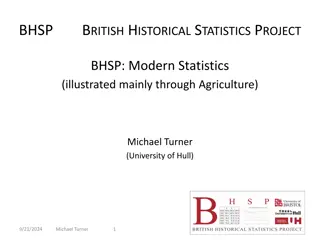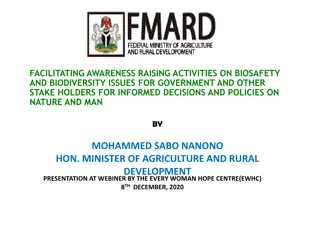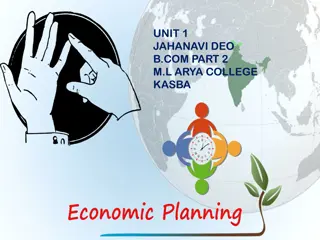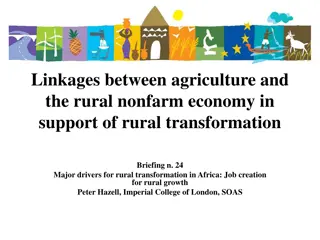Intercropping in Sustainable Agriculture
Intercropping involves growing two or more crops in the same field simultaneously, offering economic, agronomic, and environmental benefits such as increased yield, biodiversity promotion, and soil fertility improvement. However, it comes with challenges like selecting appropriate crop species and additional labor. Despite its long history, the complexity of interactions between crops and environmental factors still poses obstacles to widespread adoption.
Download Presentation

Please find below an Image/Link to download the presentation.
The content on the website is provided AS IS for your information and personal use only. It may not be sold, licensed, or shared on other websites without obtaining consent from the author.If you encounter any issues during the download, it is possible that the publisher has removed the file from their server.
You are allowed to download the files provided on this website for personal or commercial use, subject to the condition that they are used lawfully. All files are the property of their respective owners.
The content on the website is provided AS IS for your information and personal use only. It may not be sold, licensed, or shared on other websites without obtaining consent from the author.
E N D
Presentation Transcript
Modules on Sustainable Agriculture MOSA Intercropping 1
What is Intercropping? Definition: growing two or more crops in the same field at the same time. (FAO) Methods: Broadcasting the seeds of both crops, or dibbling the seeds without any row arrangement -> mixed intercropping Planting the main crop in rows and then broadcasting the seeds of the intercrop Planting both the main crop and the intercrop in rows -> row intercropping Two or more crops grow simultaneously during part of the life cycle of each, second crop is planted before the first crop matures -> relay cropping 2
What is Intercropping? Source: http://www.fao.org/ag/ca/AfricaTrainingManualCD/PDF%20Files/06CROP1.PDF 3
Benefits of intercropping Economic benefits Agronomic benefits Environmental benefits Greater yield on a given piece of land Organic matter increase Promotion of biodiversity Insurance against crop failure or against unstable market prices Improves soil fertility through biological nitrogen fixation (legumes) Increases soil conservation through ground cover Financial stability Reduction of pest and disease incidence Carbon sequestration Lower inputs through reduced fertilizer and pesticide requirements Improvement of forage quality Restoring on-farm biodiversity 4
Limitations Selection of the appropriate crop species and the appropriate sowing densities Extra work in preparing and planting the seed mixture Extra work during crop management practices, including harvest Quite complex as the success of intercropping systems depend much on the interactions between the component species, the available management practices, and the environmental conditions Mechanization is a major problem in intercropping 5
Conclusion In most smallholder multiple cropping systems, productivity in terms of harvestable products per unit area is higher than under sole cropping Used traditionally for thousands of years, it is still poorly understood Intercrop combination to be biologically advantageous, the mixture of components needs to be chosen with care Biggest obstacle in adopting intercropping systems is to conceptualize planting, cultivation, fertilization, spraying, and harvesting of more than one crop in the same field Present knowledge only provides a rough guide as to what new combinations of crops and varieties should be tried Multiple advantages that can occur from intercropping, particularly in the seek of sustainable agricultural systems 6
References Lithourgidis, A.S., Dordas, C.A., Damalas, C.A., Vlachostergios, D.N., Annual intercrops: an alternative pathway for sustainable agriculture, Australian Journal of Crop Science, 2011, online: http://www.cropj.com/anastasios_5_4_2011_396_410.pdf Food and Agriculture Organisation, 6 crops and cropping systems, 2015, online: http://www.fao.org/ag/ca/AfricaTrainingManualCD/PDF%20Files/06CROP1.PDF 7
